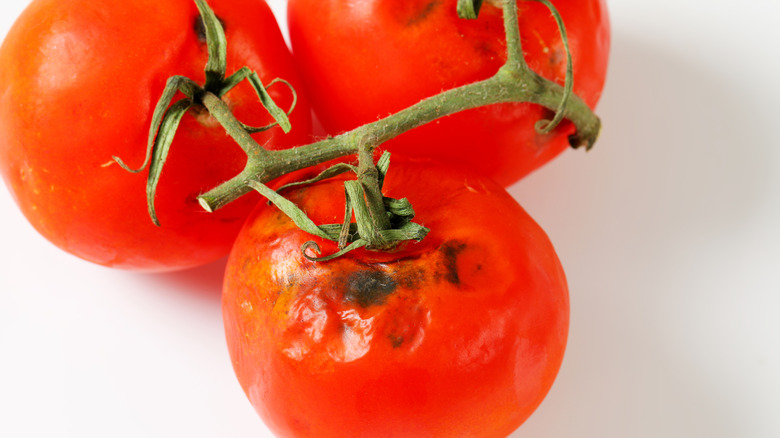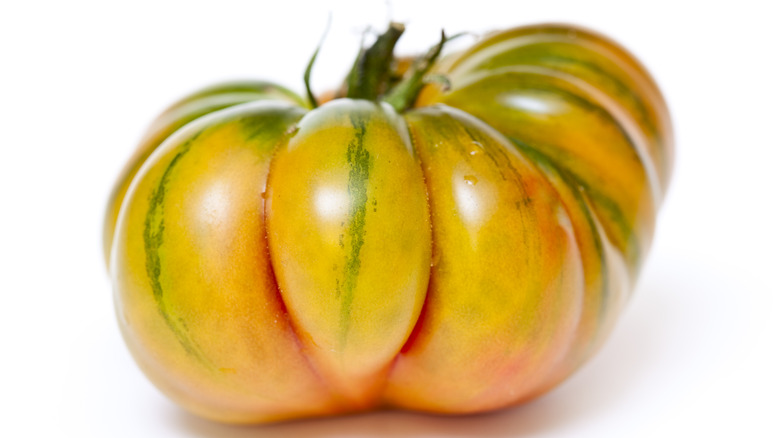How To Choose A Ripe Tomato
There's nothing better than biting into a succulent, ripe, sun-ripened tomato and wiping the juices from your chin. And there's nothing worse than digging into a mealy, mushy, slightly translucent piece of fruit. Tomatoes may be available year-round, but that doesn't mean their quality is as consistent.
While choosing the most attractive tomato may seem like the easiest and most straightforward approach, looks can be deceiving. Not all tomatoes are bright red — they come in several colors, shades, and combinations thereof. There are also important attributes you want that your touch can clue you into. It's best to peel your eyes and roll up your sleeves when choosing the best of the bunch.
Whether you're growing your own, hitting the local farmers market, or shopping the grocery store shelves, there are a few things you can look out for to ensure you get the ripest tomato off the vine or in the bin. No special skills are required, all you need are three of your five senses.
What to look for by sight and smell
The scent is an important indicator of what you'll get when you slice a tomato open. Give the tomato a sniff at the stem. It should be fragrant and have a smell sweet. The stronger the scent, the more flavorful it will be. No smell means an underripe and bland tomato. If it smells musty, that can indicate it is rotten.
A ripe tomato will have a deep, bright, and rich hue that is also uniform, which tells you it ripened evenly. Skip over any that have yellow or green areas (on a red tomato) or those lacking color near the steam. If the color is unsaturated and dull, the tomato may not be ripe enough yet. And if the stem is dried up, keep moving. You'll want to steer clear of blemishes, holes, and dark spots which may clue you into the rotting process having started inside or a bug infestation. Even just a small spot can indicate the inside is shot. The skin should be smooth, glossy, and free of wrinkles.
What to look for by touch
To check firmness, don't squeeze it too hard. You run the risk of bruising and doing damage to the inside. Gently press with your thumb to test how much give there is. The skin should resist back slightly, but not be so hard it doesn't budge at all. If the tomato is very soft all over, it's overripe and not a good choice. Run your fingertips over the skin to check that it is wrinkle-free and taught.
Take the tomato in your hand and get a sense of its weight in your palm. It should feel dense and heavy. The heavier the tomato, the juicer it is — and who doesn't want a juicy tomato? Tomatoes that feel light are most likely underripe. Testing weight and firmness is perfect for checking heirloom tomatoes that are often a multitude of tie-dyed colors and don't follow the conventional ripeness cycle of green to red.


